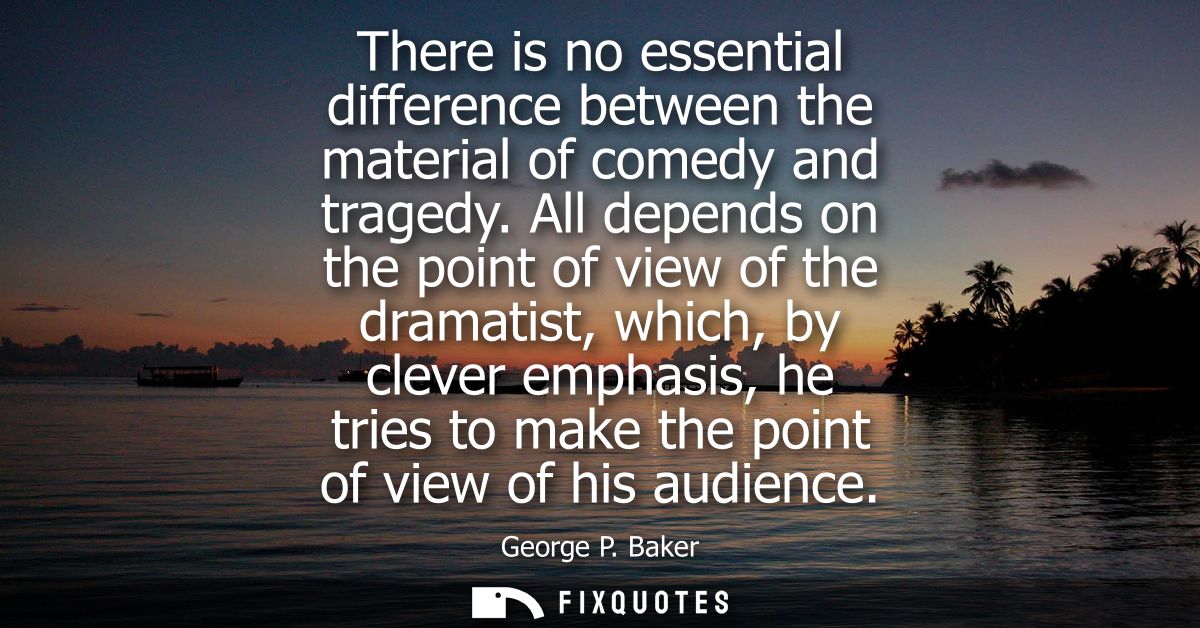"There is no essential difference between the material of comedy and tragedy. All depends on the point of view of the dramatist, which, by clever emphasis, he tries to make the point of view of his audience"
About this Quote
Comedy and tragedy, often regarded as distinct genres, are built from the same fundamental experiences of life: conflict, misunderstanding, ambition, desire, and loss. The so-called "material", the situations, dilemmas, and human emotions from which stories arise, remains unchanged across these categories. What determines whether a story provokes laughter or tears, reflection or relief, is not the substance itself, but the orientation and intention of the storyteller.
The dramatist, as George P. Baker suggests, acts less as a chronicler of events and more as an interpreter, shaping how these events are perceived. Through choices in characterization, tone, structure, and emphasis, a playwright can transform a potentially tragic tale into one that amuses, or reveal comic absurdities within tragic circumstances. For example, a scene featuring a character’s humiliation can become wrenchingly sad or uproariously funny, depending on the context and framing. Shakespeare, perhaps the master dramatist, often blurred this boundary, infusing tragedies with moments of dark humor, and comedies with underlying pathos.
Crucially, Baker points out that the dramatist's perspective is not solely a private lens, it is artfully imparted to the audience. Through emphasis, pacing, and cues, the dramatist invites viewers to adopt a particular point of view: to find suffering ridiculous or amusing, to feel empathy or ironic distance. The skill lies in guiding collective perception, making the audience complicit in seeing tragedy as laughter or comedy as heartbreak.
The difference between comedy and tragedy, then, is more mutable and subjective than typically acknowledged. Rather than being innate to certain stories, these categories exemplify how storytelling can transcend binary classifications, asking audiences to consider their own responses and the motivations behind their emotional engagement. The line between laughter and tears is as thin as the dramaturgical choices that bring a script to life.
About the Author
